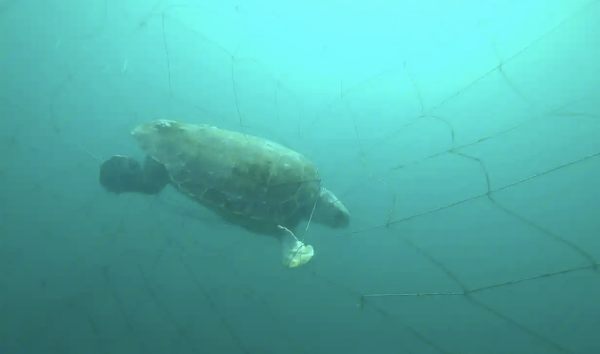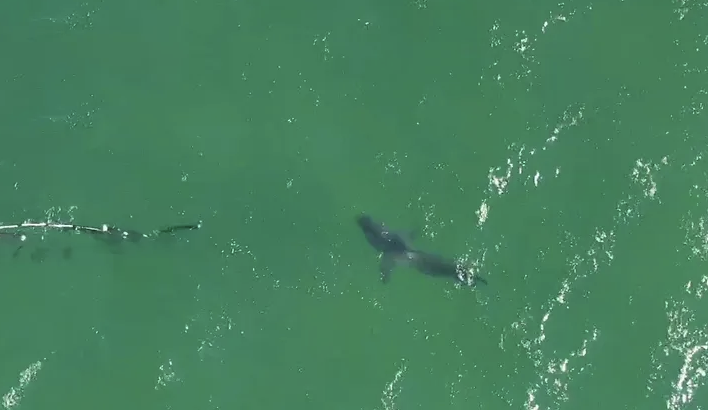People across the country have been fearful to step foot in the ocean because of a spike in shark attacks.Scientific American reported that 2012 was the first time that a shark injured someone in the Cape Cod shoreline area, and another two incidents followed including a fatal attack in 2018. As the earth gets warmer, the sharks get closer, but can they really control themselves when their ecosystems are uprooted? The answer is no.
Varieties of shark species are migrating closer to shore in search of a food source and comfortable water temperatures. Unfortunately, it just so happens that they are wandering right over to public beaches internationally. Consequently, the number of shark attacks has risen. Sharks have an impeccable sixth sense called ampullae of lorenzini that allows them to sense objects based on their electromagnetic pulses. Most shark attacks are honest mistakes. They can mistake the electric pulse from leg paddling on a surfboard for that of a seal swimming. Sharks also do not have hands, so they explore with their mouths.
Sharks have been “exploring with their mouths” more as the years go by. For instance, there have been 28 fatal shark attacks in South Africa since 2000, 14 of them by great white sharks. The great whites have also been making more of an appearance in Long Island and Cape Cod. Scientific American says that Cape Cod has now joined South Africa, Central California, Mexico’s Guadalupe Island, and Australia’s Neptune Islands as an established great white hotspot (The Remarkable Rebound of the Great White). With shark encounters on the rise, the world is in need of a solution.
Currently, beaches around the world are using a large anchored net with buoys on top. The exclusion net is detrimental to beach ecosystems. The net prevents more than just sharks from coming closer and interrupts the natural flow of the environment. It is detrimental to the, and interrupts the natural tide and water movement of the ocean. The so-called “solution” has caught other organisms and trapped them, causing an unnatural scarcity of wildlife near the shoreline. For example, according to the Sydney Morning Herald, over the past 12 months, only 24 of the 228 marine life caught in the shark net were target shark species. Of the other animals caught, 123 died. Clearly, the net not only interrupts beach ecosystems but also poses a threat to other wildlife. As a result, a need presented itself for an innovative solution that would provide a safe but harmless barrier between humans and sharks. Dr. Craig O’Connell recognized this problem a few years ago and began working on his solution: the exclusion barrier.

Dr. O’Connell earned his Ph.D. from the University of Massachusetts Dartmouth in 2013. He has been on Shark Week, Animal Planet, BBC, The History Channel, National Geographic, Smithsonian Channel, Nat Geo Wild and Discovery Channel. He is also the founder of the non-profit organization “O’Seas Foundation,” which he runs with his wife, Dr. Nicole O’Connell. Established in 2013, the O’Seas Foundation is active in conservation efforts around the world. Their mission is to “protect the future of our marine life, and more specifically, our oceans through our local shark research efforts that directly involve youth as a means to educate, inspire, and train these future leaders of marine conservation”. They have conducted research worldwide, from Montauk, New York to Gansbaai, South Africa. Their website has a long list of noteworthy and impactful research they have done on sharks and their interactions with the environment around them. As a part of the O’Seas Foundation’s efforts to educate and inspire, Dr. O’Connell hosts shark camps for teenagers. This year, he allowed the teens to watch parts of his scientific process and even assist with handling the barrier.
The exclusion barrier is two rows of pipes of varying heights. The pipes are anchored to the seafloor and use foam to float. Additionally, O’Seas tested to determine if the barrier could remain intact when faced with strong currents and big swells, a problem with the current nets. According to O’Seas Foundation data, the barrier was able to withstand nine-foot swells and five-foot breaking waves. Dr. O’Connell and his team tested it with sharks in the area as well. They used BRUVS (baited remote underwater video systems) to lure the sharks to the barrier. They did preliminary research in 2021 and completed it in 2023. Their study stated that a total of 15-23 great white sharks interacted and had their swim patterns altered as a result.
The O’Seas Foundation has also made the barrier cost accessible. It is around 150 dollars per 3ft, but they are trying to raise money to cover the cost. If the barrier is both relatively cheap and more effective than the current nets, there is no reason why people should not begin replacing the dangerous nets with the more innovative exclusion barrier. This barrier is a monumental feat in the marine science field that will not only help us humans but also better our oceans which we depend on.









